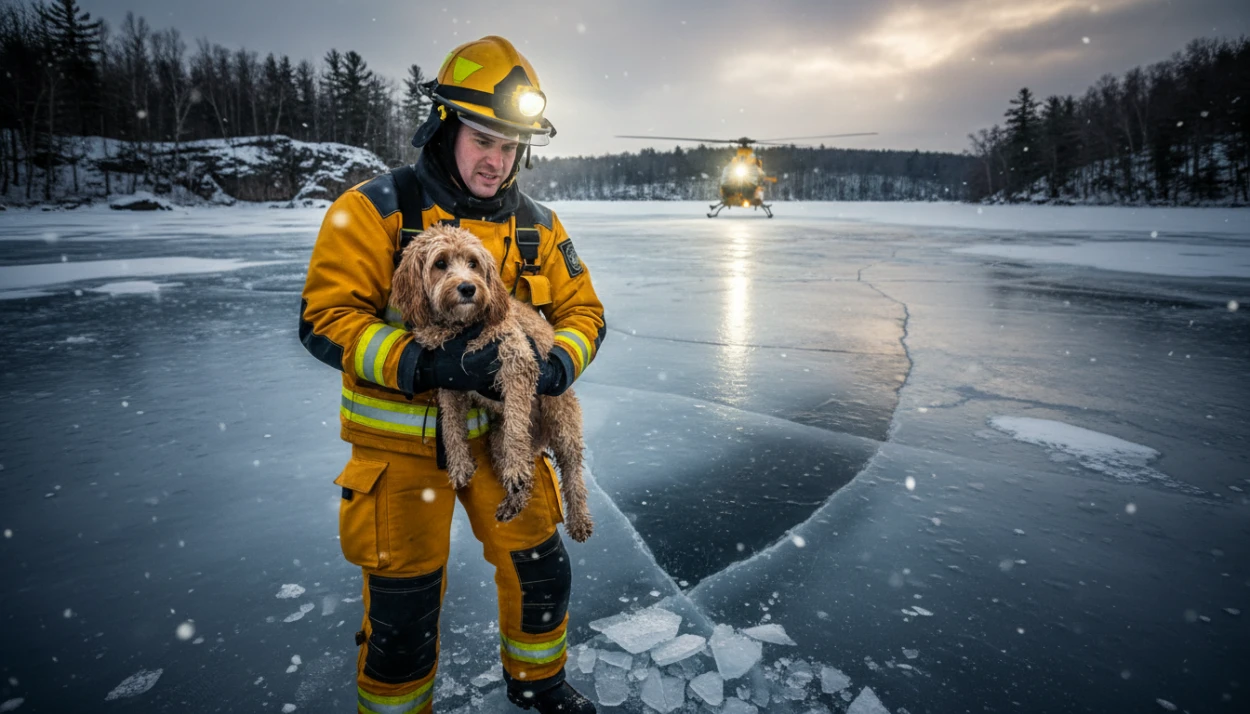German Shepherds are one the most loved breeds of dogs in the world. This breed is loved by dog lovers for its loyal nature and makes them wonderful pets. They are strong and intelligent, making them great for many different work roles. A German Shepherd is a popular choice for people around the world.

They are a handsome breed and come in short- and long-haired options. Although most people know what a German Shepherd is and its physical characteristics, there are many fascinating facts about these dogs that are not well known. These are some interesting facts about German Shepherds that you may not have known.
1. They were first bred by Max von Stephanitz
German Shepherd Dogs, although they are one of the most beloved breeds in the world today, are still a relatively new breed. Max von Stephanitz is the man who bred the first German Shepherd. He was born in 1889. After breeding dogs for shepherding, he noticed a yellow-colored wolf-like dog that caught his attention. The German Shepherd dogs were then created by Max von Stephanitz. Max von Stephanitz saw a German Shepherd Dog at a dog show. He was named Horand von Grafath. People often criticize modern German Shepherd Dogs because they have drifted from Max von Stephanitz's original breed ideology. He believed that the breed should be bred for work and that defects should be removed quickly.

Credit: pexels
2. They go by many names
The German Shepherd Dog is the most common name for this breed of dog. However, it is one of few breeds that includes the word dog in its official name. To distinguish canines from shepherds in Germany, the name includes the word dog. This is not the only name it goes by. The German country where it was born is Germany. The dog is also known as an Alsatian in Ireland and England. The Berger Allemand is another name for the breed. The breed is very popular in America, so Americans started to talk about getting rid of the German portion of the name starting in 1914. In 1917, the American Kennel Club removed the German portion of the name and the breed was known as the Shepherd Dog. In 1930, however, the club members voted to change its name to the original.
3. Popular War Dog
In the early 1900s, the German shepherd dog was trained to carry ammunition, act as a guard, and conduct search and rescue.
American soldiers were impressed by the heroism displayed by the breed during World War I. They brought some of their dogs home to continue the popularity of the breed.
Filax of Lewanno was one such dog. He served more than a year in the Allied trenches. For his heroic efforts in rescuing 54 soldiers wounded, he was awarded the 1917 Westminster dog show.
4. German Shepherd Dogs protect their family members
GSDs are self-confident and fearless. GSDs are strong and will stand firm no matter what. They can be guardian or watchdog, depending on the situation. GSDs can be friendly with strangers, but they are also tolerant of them. German Shepherd owners find this natural protective instinct reassuring. However, this protective instinct comes with some responsibility. To ensure that your companion is comfortable with strangers and other dogs, you should dedicate time to socializing and training your dog. You will reap the benefits of all that your dog has to offer if you do.
Credit: unsplash
5. A German Shepherd was the first dog to aid the blind
People with vision impairment often use dogs as an aid. A guide dog is a tool that helps people with limited vision or blindness manage their daily lives. Dogs can be used to help people with limited vision and blindness navigate their surroundings. There are many breeds of dogs that can be used to do this, but Labradors or Retrievers are the most common. The first guide dog for the visually impaired, however, was a German Shepherd Dog. Mrs. Harrison Eustis founded 'The Seeing Eye" in 1929. This foundation was established to train blind dogs. They trained their first dog, German Shepherd Dogs. Morris Frank, a blind man, had read about blind men during World War I. He also found information about dogs being trained in Switzerland. He reached out to Mrs. Eustis in order to have one of these dogs. German Shepherds are less often used as guide dogs because of their traits. Tests revealed that German Shepherd Dogs performed better as police dogs than Labradors and Retrievers.
6. GSDs can be First Service Dogs
German Shepherds have been a movie star throughout history. Strongheart and Tin Tin were both famous in the 1920s. GSDs are also known for their ability to serve as service dogs. Appollo was the first German Shepherd police K-9 to respond at Ground Zero on September 11. Morris Frank's first sighting eye dog was Buddy, a GSD. Dorothy Harrison Eustis, an American Dorothy Harrison Eustis teacher, trained the hardworking seeing eye dog in Switzerland.
Eustis was also brought back to America by Morris Frank and Buddy after they returned to the United States. With Buddy by her side, she worked to create The Seeing Eye, a school for training more seeing-eye dogs. Morris Frank was its managing director. Today, the school still trains service dogs for blind people. Bonus fact: Buddy was born Kiss, and was originally named Buddy.
7. German Shepherds are able to explore the world with their noses
Their thorough sniffing will be evident everywhere, including on walls, doors, windows and other surfaces. Dogs have a greater sense of smell than people. They can sense scents 10,000-100,000 times better than humans. The GSD is a top-ranked dog in terms of scenting ability, even though it's not the most popular. They are great detection and police dogs. GSDs are well-known for their work in bomb and drug sniffing, tracking, search and rescue, and other duties.
Credit: unsplash
8. The Panda Shepherd and German Shepherd Coloring
Most people associate a German Shepherd with its darker colors, such as black and tan, or black and gold. Panda German Shepherds are a little different. They have a unique piebald color that is only found in one GSD bloodline. While the majority of the Panda's coloring is black-tan, as much as 35% are white. This dog is sometimes also called a tricolor German Shepherd.
9. German Shepherds are known for being a mouthy breed
Their herding heritage has led them to view their mouths as an accessory. It's in their name, ShepHERD. It's normal for your GSD to chew and mouth anything you give them. But, you shouldn't allow it. Your dog will grow up and become more capable of what may be adorable in a puppy. This breed requires you to train your dog not bite you or chew on your furniture. Your German Shepherd should be taught to use these instincts safely and appropriately.
A bite from an animal is measured in pounds per square inches (PSI), which is the force of the bite. Tail and Fur reported recently that a tiger shark's bite force is 325 and a gray wolf has bites with a PSI 406. A German Shepherd's bite is also very strong, at 238.
10. German Shepherds - A sport was created
Although dogs are often used in many sports they can't claim to have their own sport. This is only one claim to fame for the German Shepherd Dog. The sport was originally called Schutzhund, and there's even a club called United Schutzhund Clubs of America. This club claims that the sport was created to assess the natural abilities and identify untrainable or unstable German Shepherd Dogs. In the early 1900s, this sport was developed in Germany. Although the sport was originally designed for German Shepherd Dogs, it is now open to all breeds of dog. The sport is so demanding that only a few breeds are able to take part. This sport tests the dogs' intelligence, courage, desire to work, training ability, sense of smell and perseverance.

Credit: germanshepherddoghq
11. GSDs can be very active
So are you. It's not possible! German Shepherd owners understand that this won't happen unless you walk your dog or take him to the park. Regular exercise is essential for this breed to thrive. Watch out for your GSD's lack of daily exercise. You can be sure your dog will get the energy you want. You will be able to ensure that your German Shepherd is happy, healthy, and enjoyable to live with.
12. German Shepherds shed
GSD owners all know that dog hair can be a part of daily life. It can be found on furniture and floors, as well as on your clothes. The ideal GSD should have a double coat with medium length and an outer coat as dense as possible, according to the German Shepherd Dog breed standard. This results in a lot of furs. These dogs shed constantly, and they also lose their undercoat twice a year (spring and fall). Brush your dog frequently to reduce shedding. Although you'll still see fur balls, consider them to be a badge of honor for GSD-owners.
13. The German Shepherd is a popular dog worldwide
This breed is very popular not only in the United States, but also in other countries around the world. This breed is very popular in Germany, where there are more than 250,000 registered purebred German Shepherd Dogs. According to estimates, there are approximately 15,0000 German Shepherd puppies being born each year in Germany. They are the seventh most-loved breed of dog in the United Kingdom according to The Kennel Club. These dogs are bred or trained by fanciers, and they are available in 78 countries. This breed is so well-known that the World Union of German Shepherd Dog Clubs was established.
14. German Shepherds are the third most intelligent breed in the world
German Shepherd Dogs are known for their intelligence. According to dog experts and scientists, this breed is actually the third most intelligent dog breed. Stanley Coren, in his book "The Intelligence of Dogs", gave this ranking. Poodles and Border Collies are the only two breeds considered to be more intelligent than a German Shepherd Dog. Coren states that a German Shepherd Dog can usually master a simple task in five repetitions. They will also obey 95% of their commands. This intelligence is what has made them such popular working dogs.
15. They are classified as a large dog breed
Dogs are classified according to their size. German Shepherd Dogs are classified in the large breed category. Each dog is unique and each dog's size will vary depending on their genetics. An adult male German Shepherd Dog will reach a height between 24 and 26 inches. A female dog will typically be between 22 and 24 inches. An adult male dog will typically weigh in the range of 66-88 pounds and a female between 49-71 pounds. Another interesting statistic is that they live between 9 and 13 years, and usually have between 4 and 9 pups.
Credit: unsplash
16. German Shepherds are often used as police dogs
While they started their lives on farms tending sheep, German Shepherds have since taken on other roles. Police dogs are one of the most well-known roles. A German Shepherd Dog's intelligence, strength, sense of smell, and agility make them the perfect breed for police dogs. They are able to perform a variety of roles in the police force, including searching for drugs and criminals, searching for explosives and searching for them.
17. GSDs provide constant companionship
German Shepherd owners don't feel lonely, as their faithful dogs are always there for them. GSDs can be slow to open up to strangers but they are loving and gentle with their families. GSDs are known for their affectionate, dedicated personalities. They can also be very fond of children. Your GSD will prefer to be with you all day and every day. Your German Shepherd will be at its best when you allow him to spend as much time with you as possible.
18. Special Club for Senior German Shepherds
The Thirteen Club is open to any German Shepherd who is 12 years old or older. The German Shepherd Dog Club of America has created this club. All you have to do to join it is to complete the application.
19. Common Health Concerns in German Shepherd Dogs
Based on Nationwide pet insurance claims, the most common conditions for German shepherd dogs are:
1. Ear infections
2. Skin allergies
3. Pyoderma and/or hot spots
4. Osteoarthritis
5. Degenerative arthritis

Credit: thegoodvibegsd
20. German Shepherds belong to the Herding Group
If you have this breed, it's not uncommon to feel your nose nudge you. Your dog will do what is natural, whether it's a nose in your back, on your leg or in your face. This breed's herding heritage is still evident, even though it isn't used as often. Your GSD can herd humans, and has the same herding qualities of independent thinking, intelligence, and independent thinking. You might see your dog "following ahead", which is when they walk in front of you and look back to make sure you are going in the right direction.












